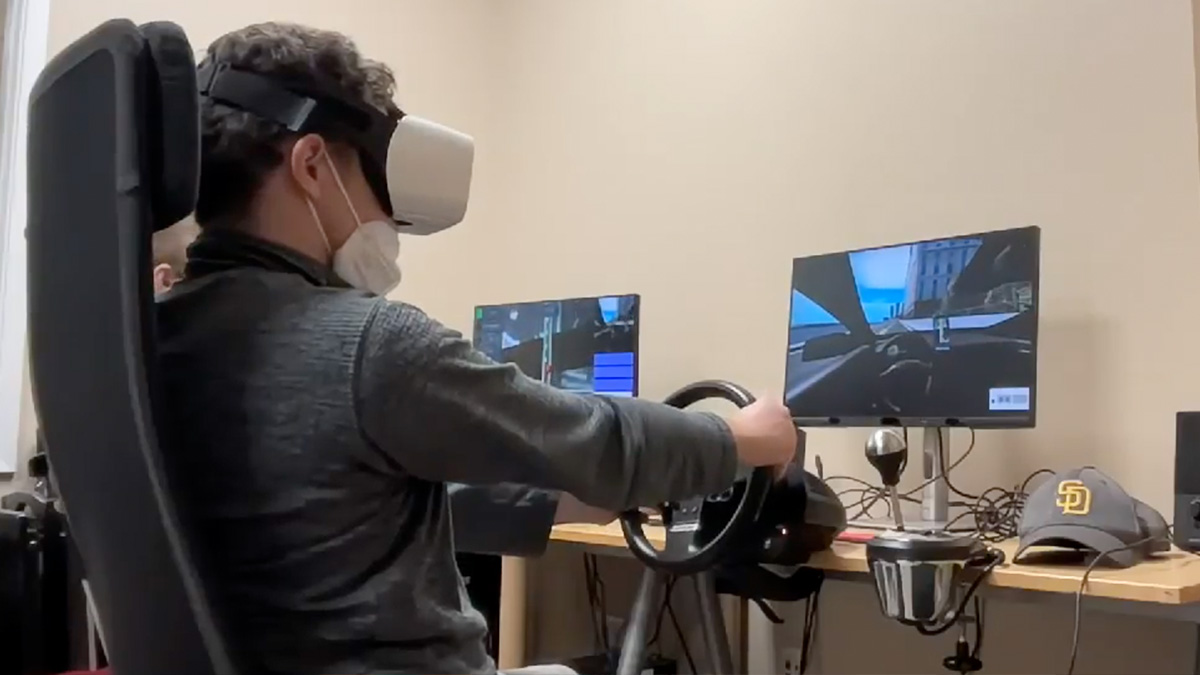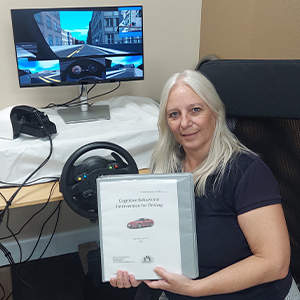Removing Roadblocks to Driving for Autism Community

One of the biggest keys to independence for autistic and neurodiverse individuals is finding and sustaining employment. And here in Southern California, where the automobile is king, there’s no bigger key to holding down a job than a set of car keys.

“Driving ability tends to be highly connected to somebody's ability to be successfully employed.”
Baker-Ericzén is teaming with Vanderbilt University faculty on a National Science Foundation (NSF) funded artificial intelligence-based system that will make learning to drive more accessible to the autism and neurodiverse communities.
The project combines a driving simulator developed at Vanderbilt with a behavioral strategy-based intervention created by Baker-Ericzén, an investigator affiliated with the Department of Administration, Rehabilitation and Postsecondary Education; Interwork Institute and Child and Adolescent Services Research Center.
In August, the team — led by professors Nilanjan Sarkar and Keivan Stassun from Vanderbilt’s Frist Center for Autism and Innovation — was approved for an NSF Civic Innovation Challenge (CIVIC) Stage 2 Award, which will support bringing the product to fruition in just one year. The project was one of only nine nationwide to advance to Stage 2 of CIVIC, a research and action competition that transitions emerging technologies from research to practice.
“This is a perfect marriage because they need both direct skill development and a place to practice,” said Baker-Ericzén. “This driving simulator system is exactly that.”
Building on Past Work
About five years ago, Baker-Ericzén — in close collaboration with members of the autism community — began to study what keeps autistic individuals from getting behind the wheel. She learned that while many people possessed driving capabilities, they often shied away because of what she calls “pervasive uncertainty.”
“There was no real encouragement of it in the system,” she said. “And there were no types of initial assessments to allow people to see what their capabilities are.”
Baker-Ericzén went on to develop a curriculum to address concerns and build executive functioning and emotion regulation skills needed in driving scenarios. Lessons focused on essential skills such as sustaining attention, avoiding distractions, remaining flexible and maintaining emotional composure in challenging situations.
Pilot testing and research showed the intervention worked as intended, and 40% of people who went through the program successfully attained a driver’s permit or license — with even more being on track to do so in the future.
Leveraging Technology
While attending a virtual meeting in 2020, Baker-Ericzén learned about the Vanderbilt team’s driving simulator — and they learned about the success of her behavioral intervention.
It seemed like a natural fit.
“As soon as our two groups got together and had a conversation, we realized these projects needed to go together,” Baker-Ericzén said.
The simulator uses artificial intelligence software to tailor the experience to the individual user, allowing people to go at their own pace. Tracking errors, the system repeats simulations on driving mechanics fundamentals for those struggling initially, while allowing those picking it up faster to move on to more advanced simulations, such as merging onto a freeway or dealing with adverse weather conditions.
“Having these really meaningful automated feedback systems in real time is critical for their confidence building,” Baker-Ericzén said. ”It’s also important for the assessment piece — seeing if someone is ready to drive or if this is even the right avenue for somebody to pursue.”
Looking Down the Road
Baker-Ericzén and her Vanderbilt colleagues are now working to bring the simulator and curriculum to the community through a group of partner organizations in California, Tennessee and Virginia. They include school districts (including San Diego Unified) looking to improve postsecondary transitional outcomes, vocational training programs, community service providers, businesses and advocacy organizations for autistic people and their families.
The team is also working to build flexibility into the simulator and curriculum in hopes that it can be adapted to be utilized more broadly across the disability community.
“We've already heard from populations like people with traumatic brain injuries and as well as other mental health conditions,” Baker-Ericzén. “We know there are plenty of folks who experience anxiety or apprehension of driving. We’re really optimistic about what kind of reach this will have.”
